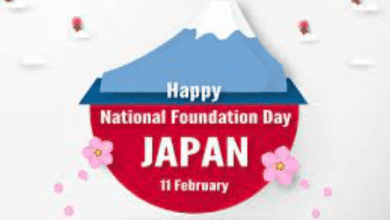National Freedom Day In United States
Unlocking the Past: National Freedom Day in the United States
Discover the rich history and significance of National Freedom Day in the United States. Explore the roots of freedom on this special day.
QUICK FACTS:
- Date: February 1
- Main Components: Wreath-laying at the Liberty Bell, commemoration of the 13th Amendment, celebration of freedom and civil rights
- Popularity: Observed by many people and organizations across the nation
- Pairings: Black History Month, Martin Luther King Jr. Day, Presidents’ Day
- Variations: National Slavery and Human Trafficking Prevention Month, National Freedom Day Association
Introduction
National Freedom Day is an observance in the United States that honors the signing of a resolution that proposed the 13th amendment of the nation’s constitution on February 1, 1865. Abraham Lincoln, who was the president at the time, signed the resolution to outlaw slavery. This anniversary is annually observed on February 1. National Freedom Day is not a public holiday, but it is a day to reflect on and remember the importance of freedom for all Americans. It is also a day to celebrate the achievements and contributions of African Americans and other civil rights advocates who fought for equality and justice. National Freedom Day is marked by various events and activities, such as wreath-laying at the Liberty Bell, educational programs, film screenings, literature meetings, and luncheons.
Related: Memorial Day of the Republic In Hungary
Background
The history of slavery and the slave trade in the United States dates back to the colonial era, when millions of Africans were forcibly brought to America and exploited for labor and profit. Slavery was a brutal and dehumanizing institution that denied the basic human rights and dignity of millions of people. Slavery also divided the nation along political, economic, and moral lines, leading to conflicts and wars.
The role of Abraham Lincoln and the 13th Amendment in ending slavery was crucial and historic. Lincoln was elected as the 16th president of the United States in 1860, amid rising tensions between the North and the South over slavery. In 1861, eleven Southern states seceded from the Union and formed the Confederate States of America, triggering the Civil War. Lincoln issued the Emancipation Proclamation in 1863, declaring that all slaves in the rebel states were free. However, this did not apply to the border states that remained loyal to the Union or to areas under Union control.
To abolish slavery permanently and legally, Lincoln supported a constitutional amendment that would prohibit slavery in all states and territories. On January 31, 1865, Congress passed a joint resolution proposing such an amendment, which became known as the 13th Amendment. The next day, February 1, 1865, Lincoln signed the resolution and sent it to the states for ratification. The amendment was ratified by three-fourths of the states on December 6, 1865, officially ending slavery in the United States.
The challenges and achievements of civil rights advocates and survivors of slavery did not end with the abolition of slavery. Despite gaining their freedom, African Americans faced discrimination, segregation, violence, and oppression in many aspects of life. They also struggled for political, social, and economic rights and opportunities. Many civil rights leaders emerged to challenge the status quo and demand equality and justice for all people. Some of these leaders include Frederick Douglass, Harriet Tubman, Sojourner Truth, Booker T. Washington, W.E.B. Du Bois, Rosa Parks, Martin Luther King Jr., Malcolm X, Thurgood Marshall, John Lewis, and many more.
Related:
Current Issues
The definition and forms of human trafficking in the world today are complex and diverse. Human trafficking is a crime that involves exploiting a person for labor, services, or commercial sex through force, fraud, or coercion. Human trafficking can affect anyone regardless of age, gender, race, nationality, or socioeconomic status. Human trafficking can take place within a country or across borders. Some examples of human trafficking include forced labor, domestic servitude, sex trafficking, child soldiers, forced marriage, organ trafficking, and debt bondage.
The scale and consequences of human trafficking for individuals, communities, and nations are enormous and devastating. Human trafficking is one of the largest and fastest-growing criminal industries in the world, generating billions of dollars in illicit profits every year. Human trafficking violates the human rights and dignity of millions of people, causing physical, psychological, and emotional harm. Human trafficking also undermines the rule of law, the social fabric, the economic development, and the security of countries and regions.
The trafficking trends and patterns in different regions and policy areas vary depending on various factors, such as supply and demand, conflict, poverty, inequality, migration, corruption, and technology. Some regions have higher rates or risks of human trafficking than others, such as Asia-Pacific, Africa, and Latin America. Some policy areas have more challenges or opportunities to address human trafficking than others, such as health, education, justice, trade, and security.
Anti-Trafficking Measures
The laws and policies that aim to prevent and combat human trafficking at the national and international levels are numerous and diverse. At the national level, many countries have enacted laws that criminalize human trafficking and provide protection and assistance to victims. Some examples of these laws include the Trafficking Victims Protection Act in the United States, the Modern Slavery Act in the United Kingdom, and the Palermo Protocol in Italy. At the international level, many organizations and agreements have been established to coordinate and cooperate on anti-trafficking efforts. Some examples of these organizations and agreements include the United Nations Office on Drugs and Crime, the International Labour Organization, the Global Alliance Against Traffic in Women, and the Protocol to Prevent, Suppress and Punish Trafficking in Persons, Especially Women and Children.
The role of governments, civil society organizations, private sector, media, and survivors in anti-trafficking efforts is vital and complementary. Governments are responsible for enacting and enforcing laws, providing resources and services, and promoting awareness and education. Civil society organizations are involved in advocacy, research, monitoring, and evaluation. Private sector actors are engaged in ethical business practices, corporate social responsibility, and innovation. Media outlets are instrumental in raising public awareness, exposing abuses, and reporting on progress. Survivors are empowered to share their stories, voice their needs, and participate in decision-making.
The challenges and best practices in implementing anti-trafficking measures in different contexts are varied and complex. Some of the common challenges include lack of data, coordination, funding, capacity, accountability, and political will. Some of the best practices include adopting a human rights-based approach, a victim-centered approach, a gender-sensitive approach, a multi-stakeholder approach, and an evidence-based approach.
Conclusion
The significance and relevance of National Freedom Day for the fight against human trafficking are profound and inspiring. National Freedom Day reminds us of the historical legacy and moral imperative of ending slavery and its modern forms. National Freedom Day also celebrates the achievements and contributions of those who have fought for freedom and justice for all people. National Freedom Day also calls us to renew our commitment and dedication to end human trafficking in our communities, our nation, and our world.
The ways that people can get involved and support anti-trafficking initiatives in their communities are manifold and meaningful. People can learn more about human trafficking and its causes, consequences, and solutions. People can spread awareness and educate others about human trafficking and how to prevent and combat it. People can report suspected cases of human trafficking and seek help if they are victims or witnesses. People can donate money or resources to organizations that work on anti-trafficking issues. People can volunteer their time or skills to support anti-trafficking programs or projects. People can advocate for policy changes or reforms that address human trafficking at local, national, or international levels. People can also express their solidarity and compassion with survivors of human trafficking and honor their resilience and courage.
National Freedom Day is a day to commemorate the signing of the 13th Amendment by Abraham Lincoln on February 1, 1865, which abolished slavery in the United States. It is also a day to celebrate freedom and civil rights for all Americans. It is also a day to reflect on and act against human trafficking, which is a modern form of slavery that affects millions of people around the world. National Freedom Day is a day to honor the past, celebrate the present, and envision the future of freedom for all people.



